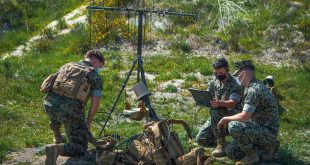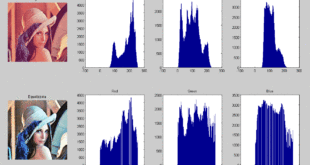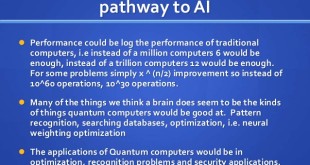Introduction: Autonomous mobile bots represent a groundbreaking innovation in the field of artificial intelligence (AI). These robotic systems are designed to operate and navigate independently, without the need for direct human control. Leveraging advanced algorithms and sensor technologies, autonomous mobile bots have the ability to perform a wide range of …
Read More »DARPA’s MINC Program: Building Self-Healing, Mission-Driven Networks
Introduction: In the ever-evolving landscape of military operations, the collection, sharing, and command of information play pivotal roles. The Network, serving as the backbone of these operations, enables leaders to execute mission command functions effectively. However, the traditional approach to network configuration is proving inadequate in meeting the demands of …
Read More »One Shot, One Hit: The AI-Enabled Smart Scope Revolutionizes Precision
Across the vast expanse of the battlefield, where split-second decisions hold life-or-death consequences, soldiers demand tools that maximize their capabilities. Enter the Smart Scope – a technological marvel that fuses artificial intelligence (AI) with traditional optics, promising to revolutionize combat by enhancing precision and efficiency like never before. No longer just …
Read More »The Race for Memory Supremacy: Spintronic STT-MRAM vs. Me-RAM
In the realm of memory technologies, two magnetic giants stand poised for dominance: STT-MRAM (Spin-Transfer Torque Magnetoresistive Random-Access Memory) and MeRAM (Magnetoelectric Random-Access Memory). These non-volatile memory solutions offer the promise of universal memory, combining the best of both worlds: the speed and endurance of DRAM with the non-volatility of …
Read More »DIA Unveils “Holistic” AI Strategy, Aims for Standardization and Ethical Implementation
In an era marked by technological advancement and the evolution of artificial intelligence (AI), the Defense Intelligence Agency (DIA) recently unveiled a groundbreaking strategy aimed at harnessing the full potential of AI while ensuring ethical compliance and operational effectiveness. This move underscores the agency’s commitment to responsibly leveraging AI for …
Read More »Unveiling Russia’s AI Strategy: A Closer Look at Their Ambitions and Approach
In recent years, the advancement of artificial intelligence (AI) has become a focal point for nations worldwide, with governments recognizing its transformative potential across various sectors. In the global race for AI dominance, Russia occupies a uniquely complex position, balancing ambitious aspirations with significant economic and technical challenges. Russia has …
Read More »Enhancing Military Operations: The Versatile Applications of Image Processing Technology
From grainy satellite images to real-time drone footage, the modern battlefield generates a staggering amount of visual data. Analyzing this data effectively is crucial for gaining situational awareness, identifying threats, and making critical decisions. This is where image processing technology steps in, acting as the eyes and brain of modern …
Read More »DARPA FoundSci: Revolutionizing Scientific Discovery with Autonomous Scientists
Introduction: The Defense Advanced Research Projects Agency (DARPA) is renowned for its cutting-edge research initiatives that push the boundaries of technological innovation. DARPA’s latest endeavor, FoundSci, seeks to develop an “autonomous scientist” powered by AI to support researchers in their quest for new knowledge. This comprehensive article delves into the …
Read More »DARPA ONISQ to exploit quantum computers for improving artificial intelligence (AI), enhancing distributed sensing and improving military Logistics
Quantum technologies offer ultra-secure communications, sensors of unprecedented precision, and computers that are exponentially more powerful than any supercomputer for a given task. Richard Feynman’s original vision for quantum computing sprang from the insight that there are hard problems, e.g. in quantum physics, quantum chemistry, and materials, that are nearly intractable …
Read More »The Evolution of Video Generation: Unlocking Creativity with AI-Powered Tools
Introduction: In the age of digital media, video content reigns supreme, captivating audiences across platforms and reshaping the way we communicate. Yet, the process of creating compelling videos has traditionally been labor-intensive, requiring specialized skills and resources. Enter AI-powered video generation—a revolutionary technology that is democratizing content creation and unleashing …
Read More » International Defense Security & Technology Your trusted Source for News, Research and Analysis
International Defense Security & Technology Your trusted Source for News, Research and Analysis



